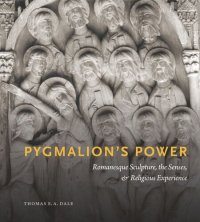
Ebook: Pygmalion’s Power: Romanesque Sculpture, the Senses, and Religious Experience
Author: Thomas E. A. Dale
- Year: 2020
- Publisher: Penn State University Press
- Language: English
- pdf
Pushed to the height of its illusionistic powers during the first centuries of the Roman Empire, sculpture was largely abandoned with the ascendancy of Christianity, as the apparent animation of the material image and practices associated with sculpture were considered both superstitious and idolatrous. In Pygmalion’s Power, Thomas E. A. Dale argues that the reintroduction of architectural sculpture after a hiatus of some seven hundred years arose with the particular goal of engaging the senses in a Christian religious experience.
Since the term “Romanesque” was coined in the nineteenth century, the reintroduction of stone sculpture around the mid-eleventh century has been explained as a revivalist phenomenon, one predicated on the desire to claim the authority of ancient Rome. In this study, Dale proposes an alternative theory. Covering a broad range of sculpture types—including autonomous cult statuary in wood and metal, funerary sculpture, architectural sculpture, and portraiture—Dale shows how the revitalized art form was part of a broader shift in emphasis toward spiritual embodiment and affective piety during the late eleventh and twelfth centuries.
Adding fresh insight to scholarship on the Romanesque, Pygmalion’s Power borrows from trends in cultural anthropology to demonstrate the power and potential of these sculptures to produce emotional effects that made them an important sensory part of the religious culture of the era.